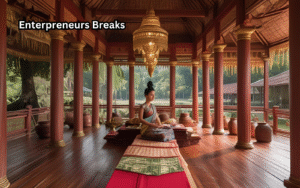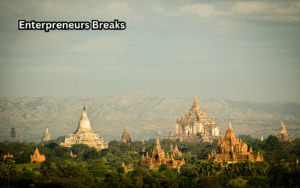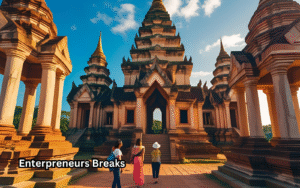Myanmar, reflects an immersive exploration into one of Southeast Asia’s most enchanting yet underexplored countries.
Myanmar offers a rich cultural heritage shaped by ancient kingdoms, diverse ethnic groups, and strong Buddhist traditions.
Its cuisine is a flavorful fusion influenced by neighboring countries, featuring dishes like Mohinga and tea leaf salad.
From the golden Shwedagon Pagoda to the serene beauty of Inle Lake and Bagan’s temples, Myanmar captivates with its natural and architectural wonders.
This journey promises a deep dive into the heart of Myanmar’s identity, traditions, and stunning landscapes.
Table of Contents
- 1 An Introduction to Myanmar: History, Culture, and Identity
- 2 Top Tourist Attractions to Visit in Myanmar
- 3 The Rich Cultural Heritage of Myanmar
- 4 Myanmar Cuisine: Traditional Dishes You Must Try
- 5 A Traveler’s Guide to Visiting Myanmar Safely
- 6 How Myanmar’s Political Landscape Has Evolved Over Time
- 7 Natural Wonders and Landscapes of Myanmar
- 8 The Role of Buddhism in Myanmar’s Society
- 9 Myanmar’s Economy: Challenges and Opportunities
- 10 What You Need to Know Before Visiting Myanmar
- 11 Conclusion
An Introduction to Myanmar: History, Culture, and Identity

Myanmar, formerly known as Burma, is a Southeast Asian nation with a deeply rooted historical and cultural background.
Bordered by India, China, Thailand, Laos, and Bangladesh, it serves as a bridge between South and Southeast Asia.
Myanmar’s history spans thousands of years, from ancient kingdoms like Bagan to colonial rule under the British Empire.
It gained independence in 1948 but faced decades of military rule, which shaped much of its modern identity.
The cultural fabric of Myanmar is woven with over 135 ethnic groups, each contributing to a rich tapestry of traditions, languages, and beliefs.
Despite political turmoil, the people of Myanmar maintain strong ties to their cultural identity, especially through art, dance, and festivals.
Religion plays a central role in daily life, with Buddhism being the dominant faith.
This unique blend of history and culture gives Myanmar its distinct identity.
Top Tourist Attractions to Visit in Myanmar
Myanmar is home to a wide array of tourist destinations that captivate travelers with their beauty and spiritual depth.
One of the most iconic sites is the Shwedagon Pagoda in Yangon, a golden stupa that is said to contain relics of the Buddha.
Another must-visit is Bagan, an ancient city filled with over 2,000 temples and pagodas that date back to the 11th century.
The sunrise and sunset views from hot air balloons over Bagan are breathtaking.
Inle Lake offers a different kind of charm with its floating villages and unique leg-rowing fishermen.
Mandalay, the last royal capital of Myanmar, is rich in historical sites, including Mandalay Palace and numerous monasteries.
For beach lovers, Ngapali Beach on the Bay of Bengal provides a serene escape with white sands and crystal-clear waters.
Each destination in Myanmar offers a different experience, making it a truly diverse country to explore.
The Rich Cultural Heritage of Myanmar
Myanmar’s cultural heritage is a reflection of its multi-ethnic society.
Traditional arts such as puppetry, dance, and weaving are not only preserved but celebrated in daily life and during festivals.
The country’s traditional clothing, like the longyi, is still widely worn by both men and women.
Handicrafts such as lacquerware from Bagan and silverware from Shan State showcase the artistic skills passed down through generations.
Festivals are a major aspect of Myanmar’s cultural calendar.
The Thingyan Water Festival, marking the Burmese New Year, is one of the most anticipated events.
During this time, people engage in water fights, donate to monasteries, and spend time with family.
Other festivals like the Thadingyut Festival of Lights and the Taunggyi Balloon Festival offer vibrant displays of community spirit and devotion.
Myanmar’s cultural richness is not only visible in its traditions but also in its architecture, cuisine, and social values.
Myanmar Cuisine: Traditional Dishes You Must Try
Myanmar’s cuisine is a delicious fusion of Indian, Chinese, and Thai influences, yet it maintains a distinct identity.
One of the most popular dishes is Mohinga, a fish broth noodle soup often eaten for breakfast.
Another favorite is Laphet Thoke, a tea leaf salad made with fermented tea leaves, nuts, and peas, offering a unique mix of textures and flavors.
Other notable dishes include Shan-style noodles, a flavorful mix of rice noodles, chicken or pork, and tomato-based sauce.
Street food also plays a big role in daily life, with vendors selling skewers, samosas, and fried snacks at every corner.
Desserts like Mont Lone Yay Paw, sweet rice balls filled with jaggery, are commonly eaten during festivals.
The use of fresh herbs, fermented ingredients, and minimal use of oil gives Burmese cuisine its healthy and hearty appeal.
A Traveler’s Guide to Visiting Myanmar Safely
Traveling to Myanmar can be incredibly rewarding, but it’s important to be well-prepared.
Due to its complex political situation, travelers should stay informed about current conditions through reliable sources and government advisories.
Most major tourist areas such as Yangon, Bagan, Mandalay, and Inle Lake are considered safe, but some border regions may be restricted or unstable.
Respect for local customs is crucial. Dress modestly, especially when visiting temples, and remove your shoes before entering religious sites.
It’s also advisable to carry cash, as ATMs can be unreliable in rural areas.
Health precautions include vaccinations and avoiding untreated water.
A local guide can enhance your experience and help navigate language barriers.
With the right preparation, Myanmar offers an unforgettable and enriching journey.
How Myanmar’s Political Landscape Has Evolved Over Time

Myanmar’s political history is marked by periods of colonialism, military rule, and democratic aspirations.
After gaining independence from British rule in 1948, the country struggled with internal conflicts and a military coup in 1962 that led to decades of authoritarian rule.
Reforms in the early 2010s brought a brief period of democratization, with the election of Aung San Suu Kyi and her party in 2015.
However, the military seized power again in 2021, leading to widespread protests and international condemnation.
Despite these setbacks, the people of Myanmar continue to push for democracy and human rights.
The political situation remains volatile, but it has also fostered a strong sense of national identity and civic engagement among the population.
Understanding Myanmar’s political journey is essential for grasping the challenges and resilience of its people.
Natural Wonders and Landscapes of Myanmar
Myanmar’s natural beauty is one of its greatest assets.
From lush jungles and majestic mountains to serene lakes and stunning beaches, the country offers diverse landscapes.
The Irrawaddy River, Myanmar’s longest river, serves as a lifeline and offers scenic boat journeys.
Mount Popa, an extinct volcano, is home to sacred temples and offers panoramic views.
Hkakabo Razi, the highest peak in Southeast Asia, is a dream destination for trekkers and adventurers.
The Chin Hills and Shan Plateau are ideal for eco-tourism and cultural exploration.
Inle Lake’s floating gardens and biodiversity attract nature lovers and researchers alike.
These natural wonders not only enhance tourism but also support local communities and biodiversity conservation efforts.
Myanmar’s untouched landscapes are a haven for those seeking solitude and adventure.
The Role of Buddhism in Myanmar’s Society
Buddhism is deeply embedded in the daily life and cultural fabric of Myanmar.
Approximately 90% of the population practices Theravāda Buddhism, which influences everything from education to politics.
Monasteries serve as both religious and community centers, where young boys often spend time as novice monks.
Daily acts of merit, such as offering food to monks or participating in temple maintenance, are common.
Major religious sites like the Shwedagon Pagoda and Mahamuni Buddha Temple are not just tourist attractions but living centers of worship.
Festivals follow the lunar calendar and are closely tied to Buddhist teachings.
This spiritual framework promotes values such as compassion, mindfulness, and generosity, shaping the social behavior and worldview of the Burmese people.
Myanmar’s Economy: Challenges and Opportunities
Myanmar’s economy has vast potential but faces significant challenges.
It is rich in natural resources like jade, oil, gas, and timber, yet remains underdeveloped due to decades of isolation and political instability.
Agriculture employs a large portion of the population, while sectors like tourism, manufacturing, and telecommunications show growth potential.
Economic sanctions, internal conflict, and the military takeover have severely impacted investor confidence and economic performance.
However, the youth population, digital adoption, and regional trade partnerships offer some hope for recovery.
Sustainable development, transparency, and political stability are key to unlocking Myanmar’s economic future.
Foreign aid and international cooperation can also play a role in fostering inclusive growth.
What You Need to Know Before Visiting Myanmar

Before visiting Myanmar, travelers should be aware of a few essential tips.
First, obtain a visa in advance and check for any travel restrictions.
Internet access and mobile coverage are generally good in major cities but can be limited in rural areas. It’s best to download offline maps and carry a physical guidebook.
English is not widely spoken outside urban centers, so learning basic Burmese phrases or hiring a local guide is helpful.
Always carry local currency (Kyat), and avoid political discussions in public.
Respect local customs, and always ask permission before photographing people.
While the country offers immense beauty and hospitality, a respectful and informed approach will ensure a safe and meaningful visit.
Conclusion
Myanmar is a land of profound contrasts and captivating beauty.
From ancient temples and vibrant festivals to stunning landscapes and rich cultural heritage, the country offers an unforgettable experience for those willing to explore it with an open mind.
Despite political and economic challenges, the spirit of the Burmese people remains resilient and welcoming.
As Myanmar slowly opens up to the world, it presents not only a destination but a lesson in history, faith, and human connection.
For travelers, researchers, and cultural enthusiasts alike, Myanmar is a treasure waiting to be discovered, understood, and appreciated.
 Entrepreneurs Breaks Inspiring Entrepreneurs Every Day
Entrepreneurs Breaks Inspiring Entrepreneurs Every Day
